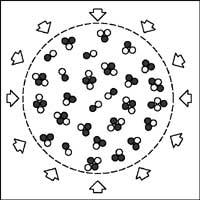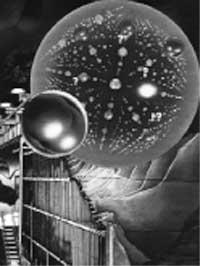Cold fusion finally accepted
1991/10/01 Elhuyar Zientzia Iturria: Elhuyar aldizkaria
Scientific news briefly
in this section we have spoken on more than one occasion (see, for example, numbers 31 and 34) of the cold merger that has been the subject of debates and newsrooms. Lately, however, the journal of the American Nuclear Society, Fusion Tekny, includes the article by two groups of physicists. The title of the work is “Nuclear Energy Release in Metals” and, in addition, on April 25, physicists’ groups offered a press conference.
Cold fusion, B. Physicists Stanley Pons and Martin Flischmann discovered the electrolysis typical of deuterium or heavy water, made with palladium-coated electrodes. In addition to generating an unusual heat that no one could explain, two experts detected the release of helium particles 4, which theoretically represented the fusion of atomic nuclei.
Atomic fusion could only be achieved so far with huge amounts of energy. Therefore, the detection of this phenomenon without large amounts of energy and at room temperature has put many scientists in the tasks of verification and in the last two years controversial opinions have been published. Some have also tried to immediately bury the cold fusion.
What they say is Frederick J. Mayer (head of a group of physicists mentioned) and John R. Reitz. According to them, it seems that cold fusion can culminate with the mediation of another neutral particle located between the positive proton and the negative electron. This neutral particle would be the one that merges into the nucleus. However, there are still many incredible scientific beliefs.

Gai honi buruzko eduki gehiago
Elhuyarrek garatutako teknologia






